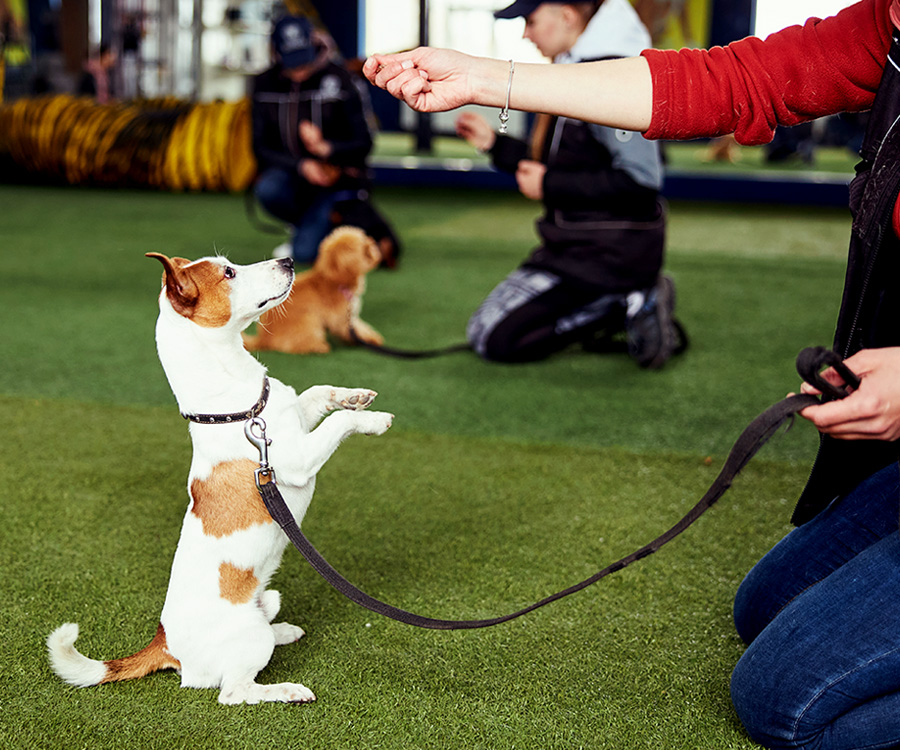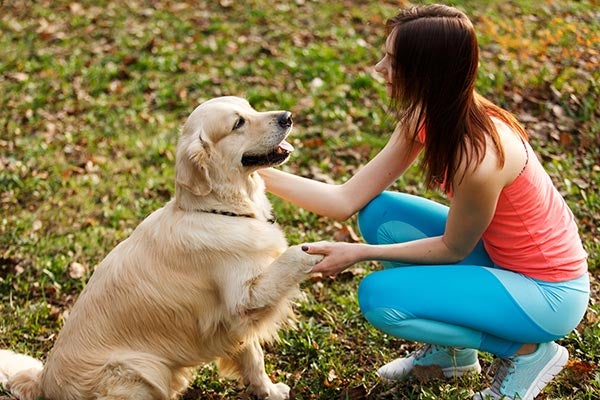Essential Tips for Effective Dog Training: An Overview for Animal Owners
Efficient dog training is a complex process that requires a tactical approach customized to both the pet dog's temperament and the owner's goals. Secret elements such as establishing constant commands, using positive support, and facilitating very early socialization play vital roles in cultivating a well-adjusted canine buddy. Many animal proprietors encounter challenges that can impede development, leading to stress and unpredictability. Understanding exactly how to browse these challenges can substantially boost the training experience, ultimately transforming the partnership between owner and pet dog. What are the vital strategies that can be utilized to guarantee success in this venture?
Comprehending Dog Behavior
Comprehending dog habits is important for reliable training and promoting a harmonious partnership in between pooches and their owners. dog training. Pet dogs communicate largely with body language, articulations, and actions, making it essential for proprietors to translate these signals accurately.

Socialization plays a substantial duty in pet dog habits; direct exposure to various settings, individuals, and other animals can significantly affect a pet dog's character. Moreover, factors such as type characteristics and private personality must guide training techniques, as some types may have particular behavior attributes that demand tailored techniques. By comprehending these components, owners can produce an encouraging setting that motivates positive actions, causing successful training outcomes and a much deeper bond with their pet dogs.
Developing Constant Commands
Reliable interaction with your canine begins with establishing consistent commands. This foundational component of training is vital for fostering understanding between you and your pet dog. Consistency in the commands you make use of makes sure that your pet dog can reliably associate details words or phrases with the desired behaviors.
When choosing commands, select clear, distinctive words that are easy to say and differentiate from each other. Stay clear of using similar-sounding commands that may confuse your dog. For example, using "sit" and "stay" is proper, yet "rest" and "hit" might cause misconceptions.
In addition, keep the very same tone and quantity for every command. Pet dogs are delicate to singing cues, so varying your tone can produce confusion.
It is equally important to ensure that all relative get on the exact same page concerning the commands used. A united front in command usage will certainly protect against combined signals and strengthen the knowing process.
Positive Reinforcement Techniques
The power of favorable reinforcement in pet dog training hinges on its capability to encourage wanted habits through incentives and praise. This strategy is grounded in the concept that habits followed by desirable end results are more probable to be duplicated. By incorporating favorable reinforcement right into your training program, you can efficiently form your dog's behavior in a positive manner.
To apply positive support, it's necessary to identify what motivates your pet, whether it be treats, playthings, or verbal praise. When your pet carries out a wanted activity, such as resting on command, instantly compensate them with a treat or affection. This organization in between the command and the positive result reinforces their understanding.
It's important to timing the incentives properly; delivering the support within secs of the desired habits aids your pet dog make the link (dog training). Additionally, uniformity is vital-- guarantee that all member of the family utilize the very same commands and reward systems to avoid confusion

Slowly, you can lower the frequency of treats as your pet dog learns the behavior, transitioning to applaud or intermittent rewards. This approach not only promotes a strong bond in between you and your pet dog yet likewise advertises a positive understanding environment, making training an enjoyable experience for both.
Socialization and Communication
Constantly revealing your pet to a selection of environments, people, and other animals is vital for their social growth. Socializing needs to start early, preferably throughout the critical home window of 3 to 14 weeks, when pups are most receptive to new experiences. Nevertheless, older dogs can additionally benefit from recurring socializing initiatives.
Introduce your dog to different setups, such as parks, pet-friendly shops, and metropolitan areas. This exposure aids them adapt to various stimulations, lowering stress and anxiety and concern actions. Encourage positive communications with various other dogs and individuals, ensuring that these experiences are risk-free and controlled to foster self-confidence.
Make use of organized playdates with courteous go to my blog canines, as this can boost your dog's social abilities and teach them ideal behavior. Obedience courses and training sessions likewise give exceptional opportunities for socializing, permitting your pet dog to interact with others in a monitored setting.
Screen your pet's body movement during communications, as this will certainly help you determine their comfort level. Slowly increase exposure to even more challenging circumstances while guaranteeing that each experience is favorable. A well-socialized dog is most likely to exhibit well balanced habits, making them a joy to have in any type of setup.
Addressing Typical Training Obstacles
Every pet owner will run into training challenges eventually, no matter of their dog's age or socialization level. he has a good point Determining common concerns such as stubbornness, diversions, and terror can aid in establishing reliable approaches for renovation.

Progressively introduce diversions as the dog ends up being a lot more proficient in commands. Short, constant training sessions are also efficient in keeping interest.
Terror can hinder a pet dog's knowing process. Progressive desensitization to the source of worry, coupled with positive support, can help minimize anxiety. Patience is critical; never compel a dog into a situation that creates distress, as this might worsen the concern.
Eventually, understanding and addressing these usual challenges with a structured approach will certainly promote an extra efficient training experience, enhancing the bond between canine and proprietor while advertising reliable learning.
Conclusion
In summary, successful pet dog training counts on a thorough understanding of canine habits, the establishment of regular commands, and the application of favorable reinforcement techniques. Socialization plays a crucial function in establishing well-adjusted family pets, while dealing with common training challenges calls for patience and versatility. By executing these necessary approaches, family pet owners can foster a solid bond with their pet dogs and advertise preferable actions, inevitably causing an unified connection between humans and their canine friends.
Comprehending dog behavior is essential for reliable training and fostering an unified relationship between dogs and their proprietors.Socialization plays a substantial function in dog behavior; direct exposure to various settings, individuals, and various other animals can substantially influence see this page a pet's character.The power of favorable support in dog training lies in its capability to urge desired actions through rewards and appreciation. By including favorable support into your training regimen, you can successfully shape your pet's behavior in a positive fashion.
In summary, effective pet training counts on an extensive understanding of canine habits, the facility of constant commands, and the application of positive support techniques.